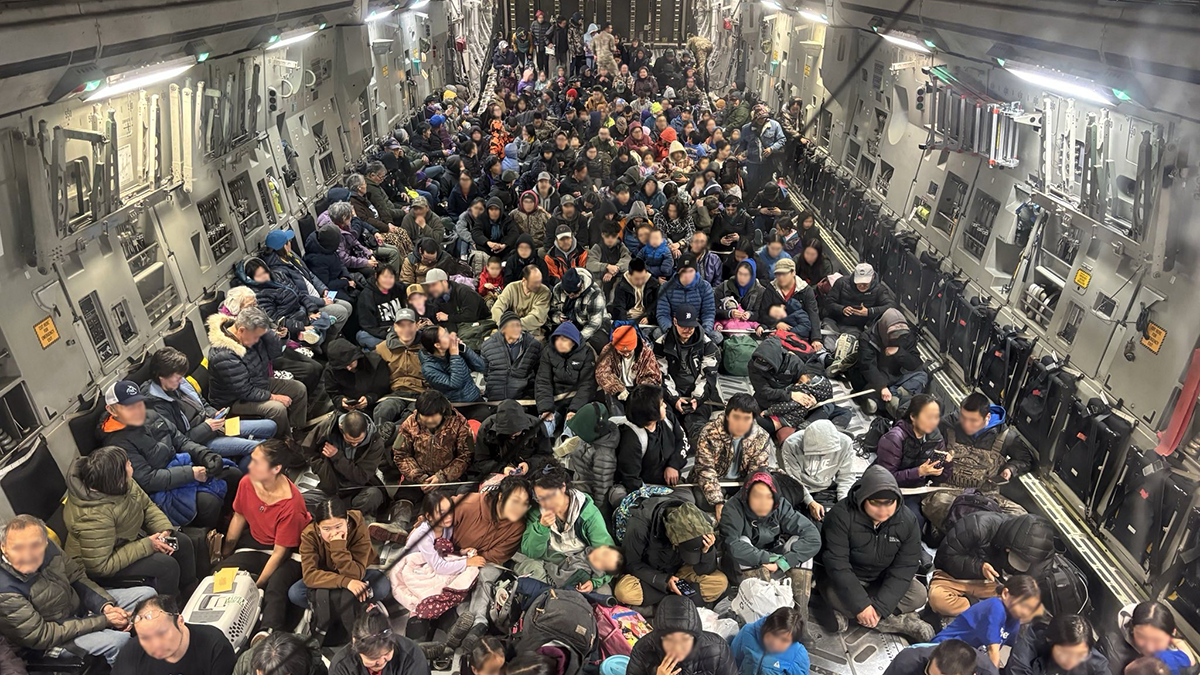Research & Developments is a blog for brief updates that provide context for the flurry of news that impacts science and scientists today.
Major floods in Alaska have caused the death of at least one person and displaced thousands more over the course of the last two weeks. Many of the displaced may not be able to return home for 18 months or longer, according to Alaska Gov. Mike Dunleavy.
Tropical Storm Halong formed in the Northern Philippine Sea on 5 October, and had become a category 4 typhoon by 7 October. Though it was considered an ex-typhoon by the time it reached western Alaska, the storm brought wind speeds of up to 113 miles per hour (181 kilometers per hour), along with severe flooding across the Yukon Delta, Kuskokwim Delta, and Norton Sound.
Among the hardest hit population centers were the villages of Kipnuk and Kwigillingok, home to a combined 1,000 people, mostly Alaska Native or American Indian. At this time of year, the remote villages can only be reached by water or by air.
In Kipnuk, water levels rose 5.9 feet (1.8 meters) above the normal highest tide line. In Kwigillingok, water levels measured 6.3 feet (1.9 meters) above the normal highest tide line—more than double the previous record set in 1990. According to a letter from the governor’s office to President Trump, 90% of structures in Kipnuk and 35% of structures in Kwigillingok have been destroyed.
The Alaska Air and Army National Guard, the U.S. Coast Guard, and Alaska State Troopers evacuated hundreds of residents to the regional hub of Bethel, then to the capital of Anchorage in what the Alaska National Guard called the state’s largest airlift operation in history.
“It’s been an all-hands-on deck endeavor, and everybody is trying to support their fellow Alaskans in their time of need,” said Col. Christy Brewer, the Alaska National Guard director of joint operations, in a 19 October statement.
Silence From FEMA
But calls for assistance from the Federal Emergency Management Agency seem to have so far gone unanswered, leaving some people asking, “Where is FEMA?”
As reported by the New York Times, the EPA revoked a $20 million grant in May that was intended to protect Kipnuk from extreme flooding. The grant cancellation was likely part of a larger effort by the administration to shift the burden of disaster response to states.
On 16 October, Dunleavy submitted a request to President Trump to declare a major disaster for the state.
The letter notes that Alaska has seen 57 state-declared disasters since November 2018, 14 of which have been approved for federal disaster assistance. There have been 14 state-declared disasters in Alaska in the last 12 months alone, including fires, freezes, landslides, and floods.
“It is anticipated that more than 1,500 Alaskans will be evacuated to our major cities, many of whom will not be able to return to their communities and homes for upwards of 18 months,” Gov. Dunleavy wrote. “This incident is of such magnitude and severity that an effective response exceeds state and local capabilities, necessitating supplementary federal assistance to save lives, protect property, public health, and safety, and mitigate the threat of further disaster.”
On 17 October, Alaska’s senators and state representative (all Republicans) also submitted a letter to President Trump, urging him to approve the governor’s request for a major disaster declaration.
Also on 17 October, Vice President JD Vance said on X that he and the president were “closely tracking the storm devastation,” and that the federal government was working closely with Alaska officials. On 18 October, Lisa Murkowski (R-AK) said she believed FEMA representatives were “totally on the ground.”
However, as of 20 October, the incident is not listed in FEMA’s disaster declaration database.
—Emily Gardner (@emfurd.bsky.social) Associate Editor
These updates are made possible through information from the scientific community. Do you have a story about science or scientists? Send us a tip at [email protected].



